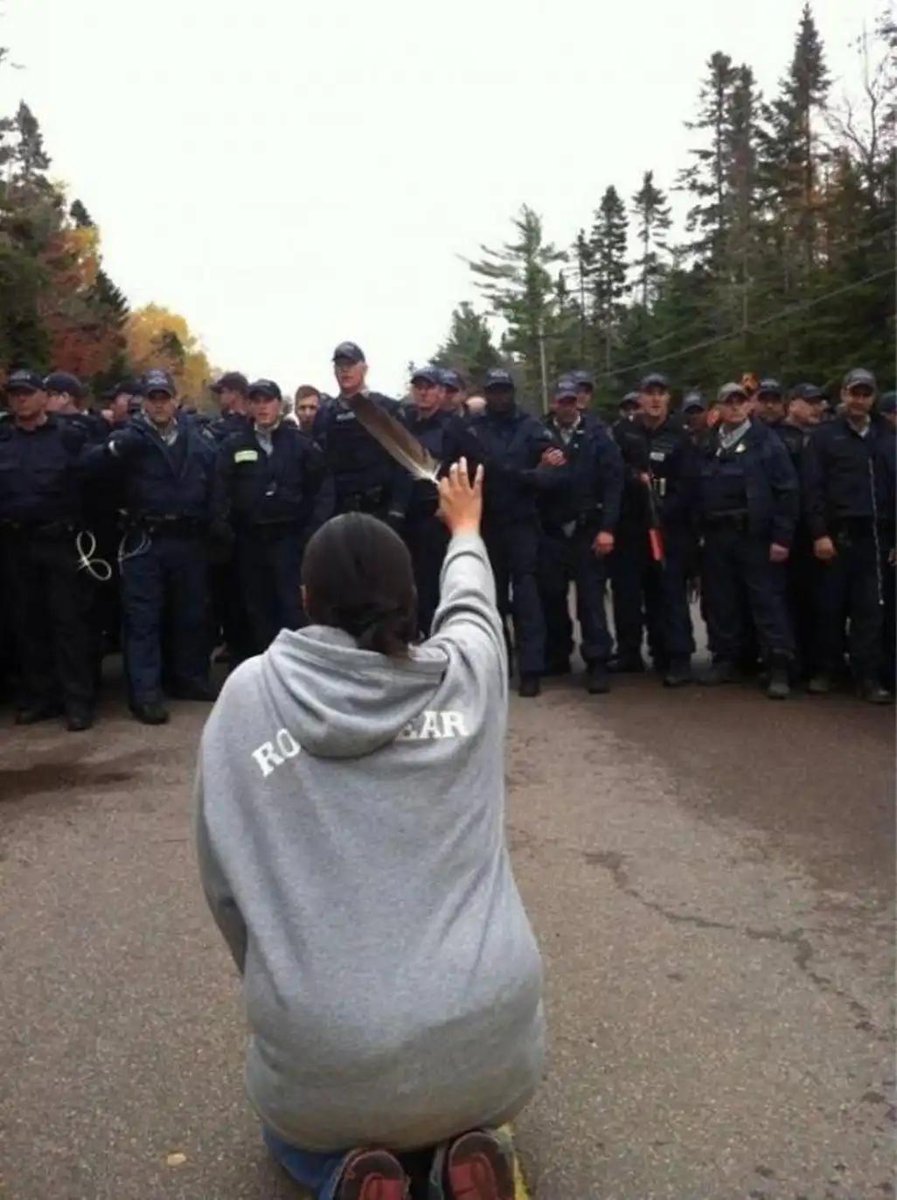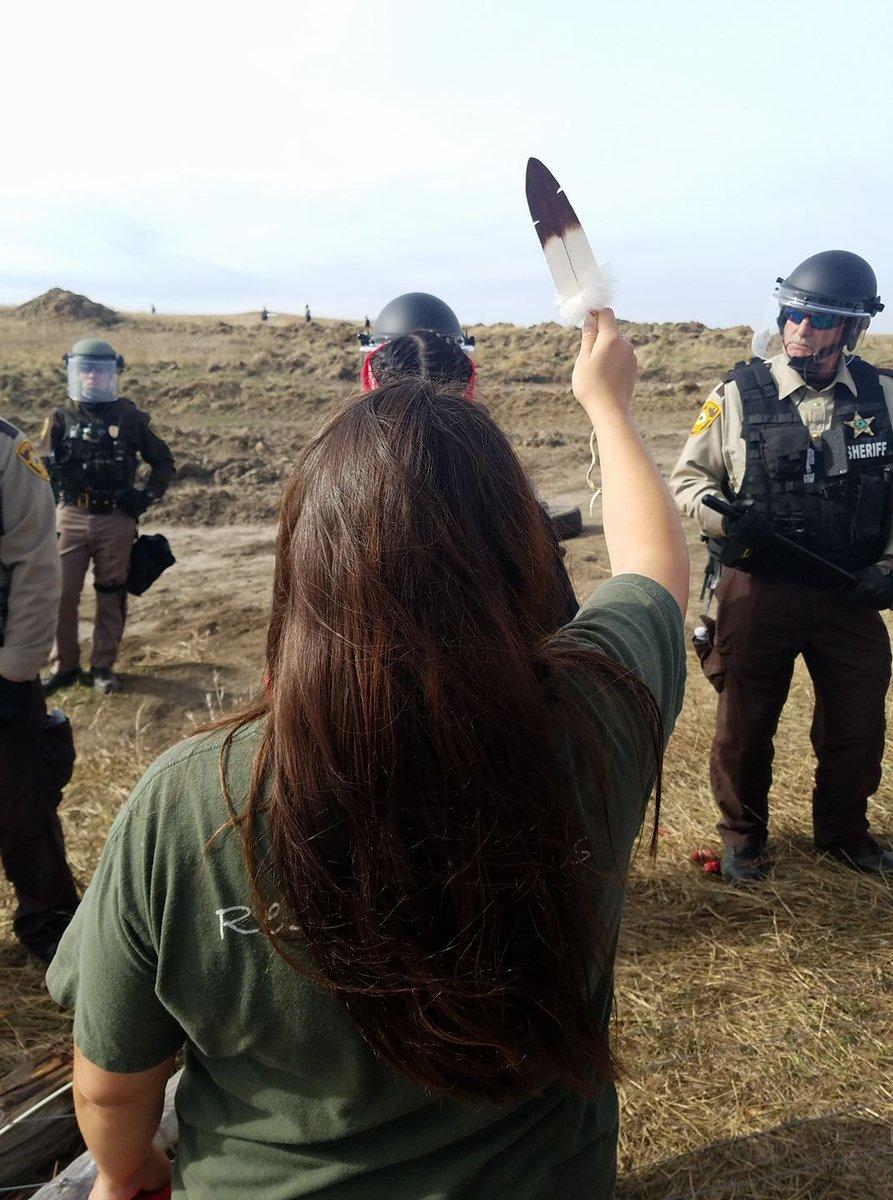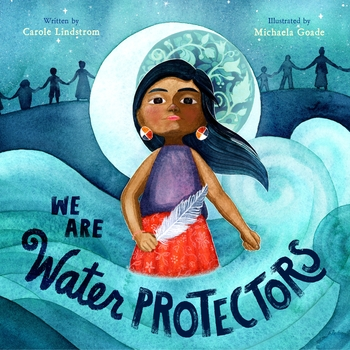On March 24, 2020, Chronicle Books published a new social studies-themed picture book for ages 8-12. Titled The Next President: The Unexpected Beginnings and Unwritten Future of America’s Presidents, it is written by Kate Messner and illustrated by Adam Rex. As readers of AICL know, we approach our reviews with a Native reader in mind. How will a Native child feel about the contents of this book? How will that child’s parents feel about its contents? We are precisely those parents.
Our post about The Next President differs from our typical posts in which we recommend, or do not recommend, a book based on its handling of Native content. The Next President is, in many ways, unlike most other books, particularly books about the presidency for young people. We found that we engaged differently with it. So this post is as much about that engagement as it is about the words and illustrations -- what we noticed, what we questioned, and where we went with our questions. We hope readers of the blog will find this approach useful. Part of our engagement involved a series of online, COVID-safe conversations, so we have inserted our names as appropriate, to show who said what.
Debbie: The Next President got some starred reviews. It uses an interesting concept. Rather than repeat what other books about presidents do--which is to talk about their presidency--it is an opportunity for children to see some aspect of each president’s life before they became president. The structure of that information is intriguing, too. Rather than a strict chronological presentation, it is framed by periods/years. Within that structure, Messner and Rex give us information about individuals who were born during that time and/or something they did. It is difficult to describe in words, so we’ll show you a page, here (this image is from Seven Impossible Things Before Breakfast's blog post about the book):
Jean: This is the first informational two-page spread in the book. It is focused on 1789, the year George Washington became president of the United States. As with most of the pages in the book, there’s a lot going on. On the left, Washington gestures from inside a portrait someone is painting. On the right, four of the men who would later become president are deep in serious conversation. The text above them provides pre-presidency facts about each of them in order: John Adams, Thomas Jefferson, James Madison, and James Monroe. The text in the box for President 2 says:
John Adams was Washington’s vice president. Adams was known for having a short temper and getting into arguments. He was the only one of the first five presidents who didn’t enslave people.
Now, look closely at what Adam Rex has created behind them. Several Black people are shown carrying a building. We thought at first it must be the White House, but it is actually what was called Federal Hall in New York, which no longer exists. In 1789, Federal Hall was a significant government building -- New York was the capital of the US then. Washington was inaugurated there, and Congress passed the Bill of Rights and established the federal judiciary in that building. A lot of the infrastructure of that time was built with enslaved labor (and slavery existed in New York at the time). So I think this illustration of the Black workers holding up Federal Hall might suggest a couple of things. One, it says that the labor of enslaved people was essential to the growth of the United States even in those early days of the country. And it may also say that when the seat of government picked up and moved (from New York to Philadelphia to Washington DC), much of that work was done by people who were enslaved, and whose human rights were denied by that government. It seems to me that illustrations like this one -- a depiction of people holding up an entire building -- invite readers to look further for meaning.
Debbie: We like that the author/illustrator team tells readers about slavery, right away. We’re told that Presidents Jefferson, Madison, Monroe, and Washington enslaved people. We wish that information extended to other presidents beyond these four. The website, “Slavery in the President’s Neighborhood” says 12 presidents enslaved Africans. In Messner and Rex’s book, the other eight pretty much get a pass.
Another page we like a lot is the opening double page spread, where we see a range of people and families touring a gallery where they learn about each of the presidents. We especially like that this is a very diverse set of individuals and families (this image is from Seven Impossible Things Before Breakfast's blog post about the book):
Jean, as we looked at the book, what stood out for you?
Jean: Ah … Aside from the nearly complete lack of reference to Native people … I was struck by the range of pre-presidency experiences Messner and Rex depict. We see Andrew Jackson scowling at a bird, along with text about his temper. (Later there’s a page about a duel in which he killed a man.) And on the facing page are pictures of 10-year-old Martin Van Buren, 16-year-old William Henry Harrison, and then 4-year-old Zachary Taylor playing in water with a stick. Jackson, Harrison, and Taylor later were known as “Indian fighters”, which boosted their political careers, and Van Buren eventually oversaw Indian Removal to Oklahoma. None were making war in the year 1789, but their interactions with Native people would prove significant, so I think it would have been good to have some mention of that in the book.
What’s something that stood out for you, Deb?
Debbie: When I first opened the book and saw the end paper art, I was really annoyed. You know how books have a nameplate in a book where its owner can write their name? This one says “This Country Belongs to” and has a line for a child to write their name. It reminded me of the uncritical singing of “This land is your land, this land is my land…” Both obscure the history of this continent, who those lands belong to, and the wars that Native people fought to keep their families safe on their homelands. Part of me wants to enjoy little Zachary playing with that stick but all I can think of is “whose land is that, Zachary, and how did your parents get it?!” That emotion carried, for me, as I went from one page to another in the book.
As we paged through the book, we spent a lot of time on some of the things we noticed. Like that statue of George Washington. That is… interesting, isn’t it? Here's a screen capture of it, taken with my phone:
Jean: Oh, gosh, yes. Adam Rex places a huge statue of Washington in the middle of the gallery on that first full 2-page spread. Is it a factual depiction or is it something imagined that Rex wants readers to think about, like the enslaved men holding up the building in the illustration we mentioned? We ended up down a research rabbit hole, wondering if that’s a real statue. It turns out it’s a real monument -- Washington in white marble, seated on a throne and half naked, holding a sword. Right behind him, Rex shows a strange, smaller figure which, it turns out, is literally the only representation of Native people in the entire book.
Deb, do you want to say more about what we found out about the statue and that figure?
Debbie: The sculptor’s name is Horatio Greenough. As we dug in that rabbit hole we learned that the statue has two small figures behind the seated Washington. From a Smithsonian page about the statue, we learned that those two figures are an American Indian and Christopher Columbus, and that they represent the Old and New World (see the side-by-side comparison of the Greenough's "Indian" with Rex’s representation of it, below). I was already annoyed with the endpaper, and so, realizing that the only Native image in the book was presented in that particular context added to my disappointment.
Jean: That statue has a strange history. When the work was unveiled in 1840, public opinion was strongly against it. People hated that it showed Washington partly clothed, and made him seem king-like. I have a negative reaction, too, for a different reason: unlike every other statue I’ve seen of a Native person created by a white person, this figure conveys purposeless, indecision, and maybe even laziness. The subject kind of leans forward and stares into the middle distance, and looks to be scratching his ear. Definitely not the heroic noble savage trope there, but definitely not any better. Think of how much time and effort went into creating a lackadaisical, confused Native man in white marble. I’d love to know the sculptor’s decision-making process. (Source for image of Rex's illustration is Debbie's camera; source for the photo on the right is George Washington Unclothed.)
Debbie: And I want to know why Rex included it! I hope teachers would want to dig in like we did but am not sure they’ll be able to do that, given the incredible demands on their time overall. A teacher could do a lot of fascinating research with students--just on that statue especially now, during a period when people are asking important questions about statues across the US and around the world. Who commissioned them, when, and why? As I did research on Greenough’s statue, I read Monument Wars: Washington D.C., the National Mall, and the Transformation of the Memorial Landscape by Kirk Savage. He said that initially, Greenough meant to include a small statue of “a negro” (Savage used quotation marks around the word) to represent plantation slavery as the engine of U.S. expansion across the continent. But, someone argued that it would connect Washington to slavery and the role of slavery in national expansion. No monument had done that before. So he decided to use Columbus instead.
I wish there was a page of “why we did this” information in the back of the book. It would have been so useful! You and I come into this book with a lot of knowledge about imperialism and how that plays out in children’s books with the endless mythologizing of American exceptionalism. I took a look online to see if anyone noted anything remotely like that in their review of the book, and nobody has. Perhaps that points to the need for a “why we did this” page.
As our deep-dive into the statue shows, we tend to ask a lot of questions and we wish we didn’t have to do that! I think picture book teams have a terrific model for what-to-do with respect to providing readers with information. That model is Kevin Maillard and Juanita Martinez Neal’s Fry Bread. It has eight pages of notes! I think that’s the first time I’ve seen that, and it would help tremendously with books like The Next President. As we read the book we saw many places where we thought more information would have helped us understand what Messner and Rex were doing. Like with the page on President Buchanan. Can you tell our readers what we wrestled with there, Jean?
Jean: The text about James Buchanan states that he was the only president who never married. The illustration shows him walking in close, if not intimate, conversation with another man. There’s a long history of speculation about whether Buchanan was gay. When we looked for photos of the man who was his partner, it was clear to us that Rex had drawn a likeness of William Rufus King. We think it would be especially helpful for LGBTQ+ readers to be aware that there’s some convincing scholarship that says Buchanan was gay, and that King, who served as a US Senator, was his long-time partner. We imagine a teacher thinking that a child can go find the information on their own, but that suggestion is fraught with peril. Some contemporary sources, and others from Buchanan’s time, contain expressions of homophobia that could be harmful.
Debbie: Yes! The goal should be affirmation, right on the page! I think of the article, “The All Heterosexual World of Children’s Nonfiction: A Critical Content Analysis of LGBTQ Identities in Orbis Pictus Award Books, 1990-2017 by Thomas Crisp, Roberta Price Gardner, and Matheus Almeida. They have a section in their article called “Give Us Names: Looking for Queerness in LGBTQ-Identified Focal Subjects” where they write that heterosexual identities are promoted explicitly, while “a code of silence and invisibility often surrounds any inclusion of queer-identified people.” In their study of all those Orbis Pictus Award books, they also write (p. 260):
While it is not impossible for readers to recognize the codes embedded in these depictions, the authors of these children's books squarely place the burden on their readers, and ultimately reinscribe queer invisibility for those who are not able to decipher the textual clues, would rather not acknowledge, or who are unaware there is a need to acknowledge queer existences.
Those are powerful passages, and if Messner and Rex read this post, I hope they address the way they may be contributing to the invisibility that Crisp, Gardner, and Almeida note! I am guessing that Messner and Rex felt that Buchanan’s identity as a gay man is not universally seen, at present, as a fact and that may be why they did not include it explicitly in the text, but that decision is contradicted by the illustration of that very man, William Rufus King.
Jean: We also wonder what scholars, or parents, or children who are Asian American or Latinx wish had been included in the book, or whether lives of Black people could have been depicted outside of enslavement and work. But we’ll return now to our original goal of analyzing the absence of Native content in The Next President. As parents, aunties, and grandmothers of Native kids, we want books like this one to show Native people as more than just part of a statue onto which a white sculptor projected his dream of a White republic. We know teachers are going to be using this book to support social studies curricula. We also suspect that publishers will want more books like this one, on different topics. So we are at work on two resources that we think would be useful in providing historical facts while acknowledging the influence of Native people on US history.
One is a series of land acknowledgements -- one for each president’s birthplace. We’re finding this one to be challenging for a variety of reasons. But we think it can support any curriculum about US presidents. The second resource is a kind of rejoinder to The Next President -- we’ll have brief facts about each president’s dealings with Native people (pre-Presidency, if possible, in keeping with Messner’s approach). We plan to have those available as soon as we can.
A brief note: we are aware that many people feel that Messner and Rex left out President 45, but he's shown on page 33 as a teenager.
As always, we welcome your comments.
__________
Note: "The All-Heterosexual World of Children's Nonfiction: A Critical Content Analysis of LGBTQ Identities in Orbis Pictus Award Books, 1990-2017" by Thomas Crisp, Robert Price Gardner, and Matheus Almeida came out in Children's Literature in Education (2018), 49, pages 246-263.



























